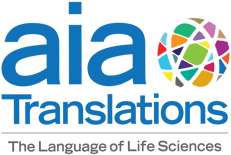Revolutionizing Pharmaceutical Translation: Integrating Large Language Models into CAT Tools
AI • Jan 27, 2025 12:00:00 PM

In the high-stakes world of pharmaceutical translation, precision and efficiency are non-negotiable. Translators face the dual challenge of maintaining accuracy in technical language while meeting tight deadlines. Computer-Assisted Translation (CAT) tools have long been invaluable in streamlining translation workflows. Now, the integration of Large Language Models (LLMs) into CAT tools promises to take pharmaceutical translation to an entirely new level. Let’s explore how this cutting-edge technology can enhance the translator’s work and improve outcomes in the pharmaceutical industry.
What Are CAT Tools and LLMs?
CAT tools are software applications that assist translators by leveraging features like translation memory, glossaries, and terminology management. These tools help maintain consistency across documents and save time by reusing previously translated content.
LLMs, such as OpenAI’s GPT-4, are advanced AI systems trained on vast amounts of multilingual data. They excel at understanding context, generating coherent text, and translating complex content. Integrating LLMs into CAT tools combines the strengths of both technologies, offering new possibilities for pharmaceutical translation.
Benefits of Integrating LLMs into CAT Tools
- Enhanced Translation Accuracy LLMs can provide context-aware suggestions and refine translations by understanding complex pharmaceutical terminology. This minimizes errors and ensures compliance with industry standards.
- Faster Turnaround Times By generating high-quality draft translations within CAT tools, LLMs reduce the time translators spend on initial drafts. Translators can focus on reviewing and refining content, speeding up the overall workflow.
- Improved Terminology Management LLMs can analyze glossaries and terminology databases integrated into CAT tools. They ensure consistent usage of approved terms across translations, which is critical in regulatory documents, clinical trial materials, and drug packaging.
- Real-Time Feedback LLMs can identify potential inconsistencies, missing translations, or stylistic deviations as translators work, offering real-time feedback that enhances quality.
- Multilingual Support With their ability to handle multiple languages and dialects, LLMs help translators work seamlessly across global markets, addressing the linguistic and cultural nuances essential in pharmaceutical translations.
Key Applications in Pharmaceutical Translation
- Regulatory Document Translation LLM-enhanced CAT tools can streamline the translation of submission documents for regulatory authorities, ensuring precision and consistency while reducing the risk of errors.
- Clinical Trial Materials Translating informed consent forms, patient questionnaires, and protocols becomes more efficient and accurate with LLMs, accelerating the clinical trial process across diverse regions.
- Marketing and Patient Education Materials LLMs ensure that translated marketing content and educational materials maintain the appropriate tone and clarity, helping pharmaceutical companies effectively communicate with healthcare providers and patients.
- Post-Editing Machine Translation (PEMT) LLMs can generate high-quality translations that require minimal post-editing. Translators can focus on refining style and ensuring compliance with regional standards.
Challenges and Considerations
While the integration of LLMs into CAT tools offers numerous advantages, there are challenges to address:
- Data Privacy: Translators must ensure that sensitive pharmaceutical data is handled securely and complies with regulations like GDPR and HIPAA.
- Quality Assurance: AI-generated translations should always be reviewed by skilled translators to guarantee accuracy, particularly for highly technical content.
- Customization: Training LLMs on pharmaceutical-specific data and terminology is essential to optimize their performance within CAT tools.
The Future of CAT Tools with LLM Integration
The integration of LLMs into CAT tools represents a transformative leap for pharmaceutical translation. By combining the contextual understanding and generative capabilities of LLMs with the robust features of CAT tools, translators can achieve unparalleled efficiency and precision. This technology not only empowers translators but also supports pharmaceutical companies in delivering accurate and compliant translations, fostering trust and safety in global healthcare markets.
As the pharmaceutical industry continues to expand globally, the demand for high-quality translations will only grow. LLM-enhanced CAT tools offer a scalable solution, enabling translators to meet this demand while maintaining the highest standards of accuracy and reliability.
At aiaTranslations, we’re at the forefront of innovation, leveraging LLM-integrated CAT tools to provide exceptional pharmaceutical translation services. Contact us today to learn how our advanced solutions can support your global operations.
